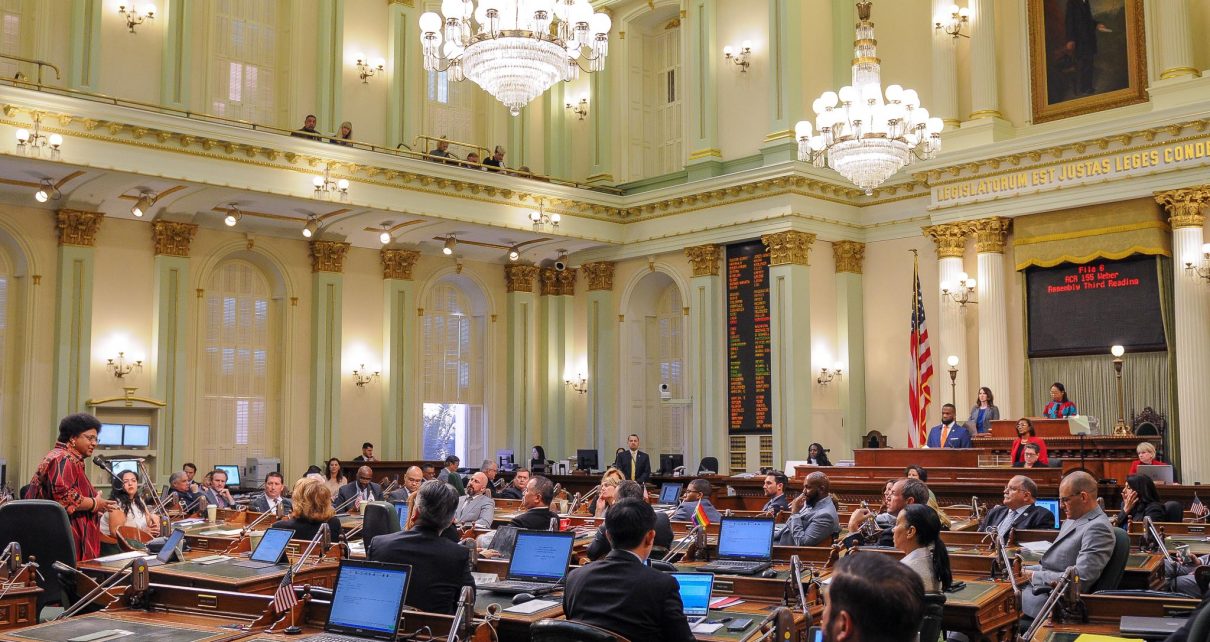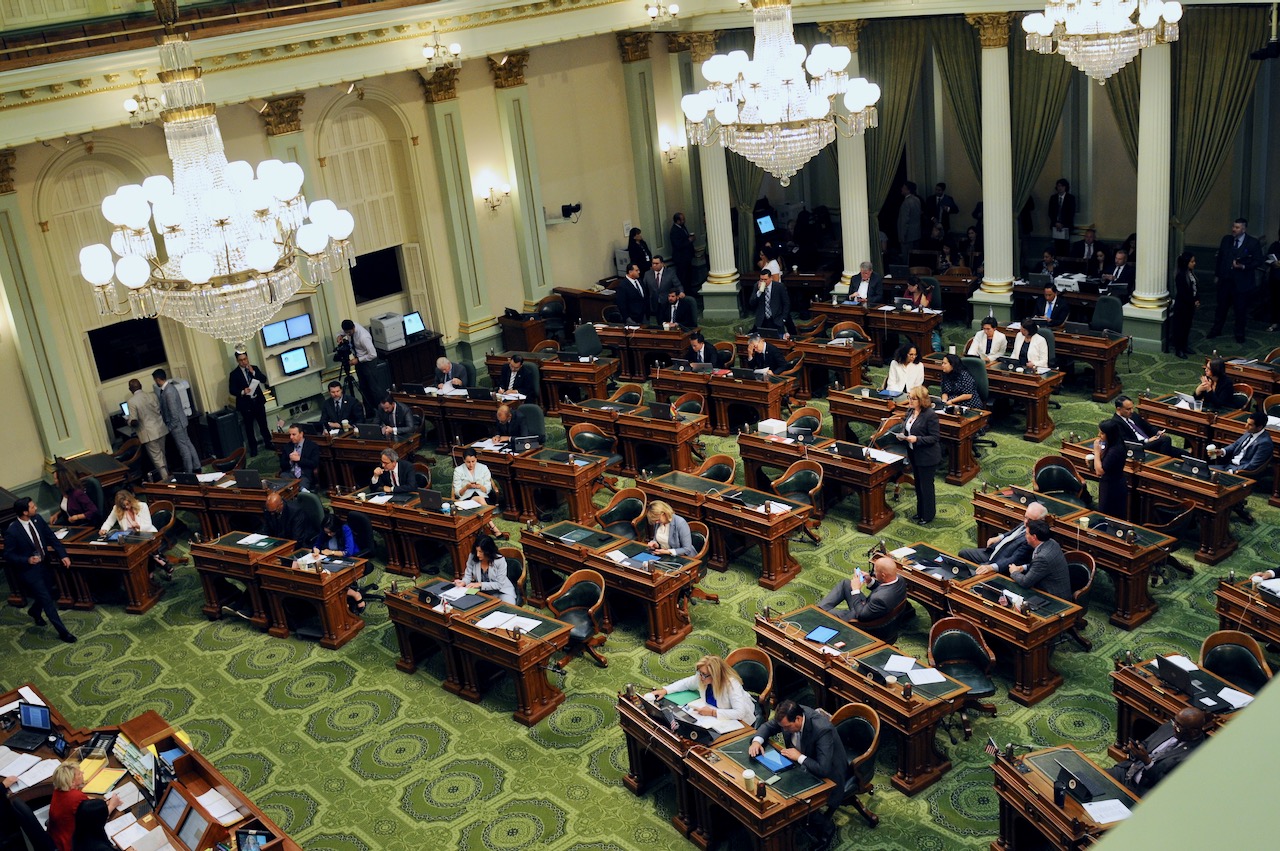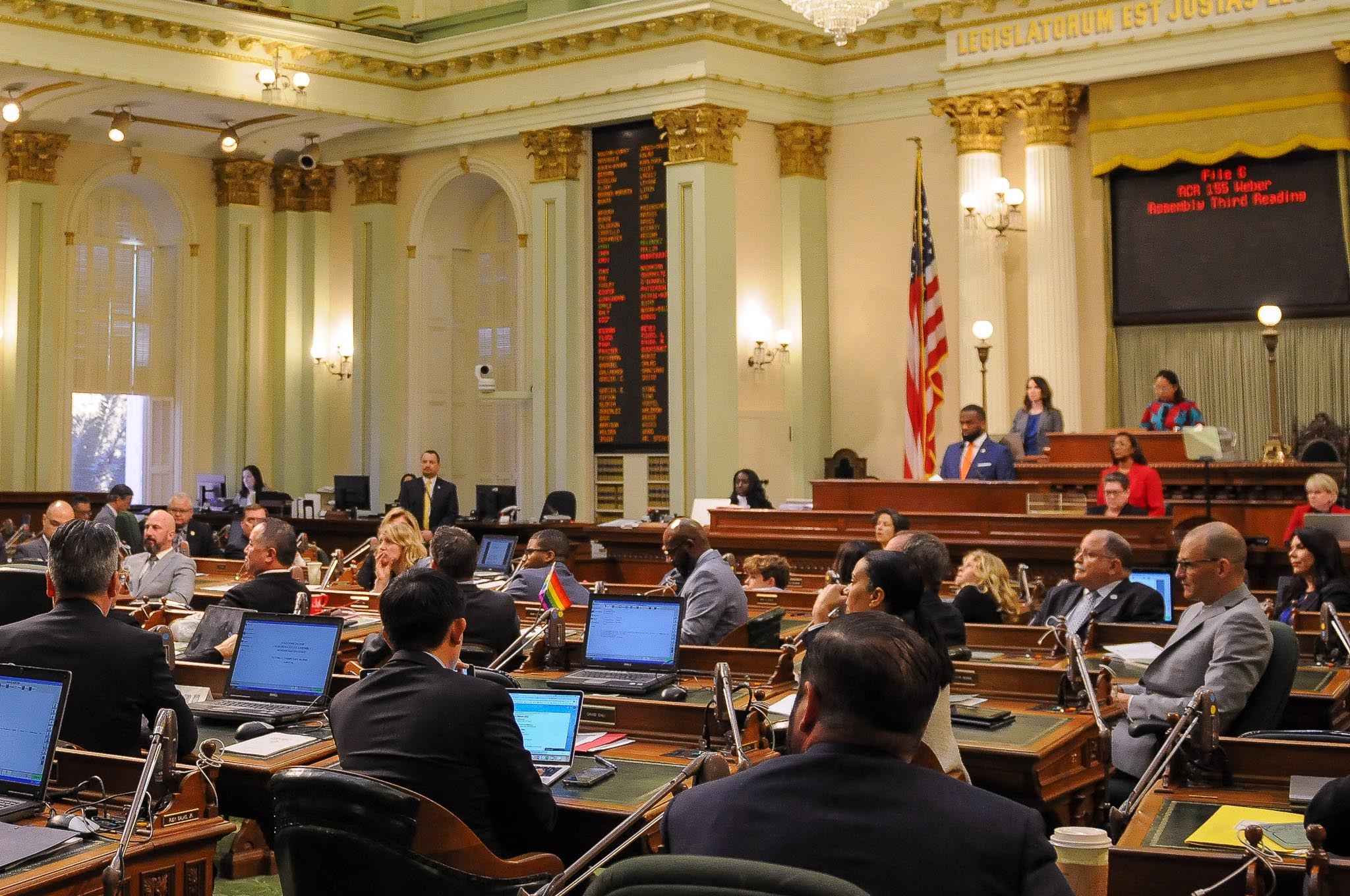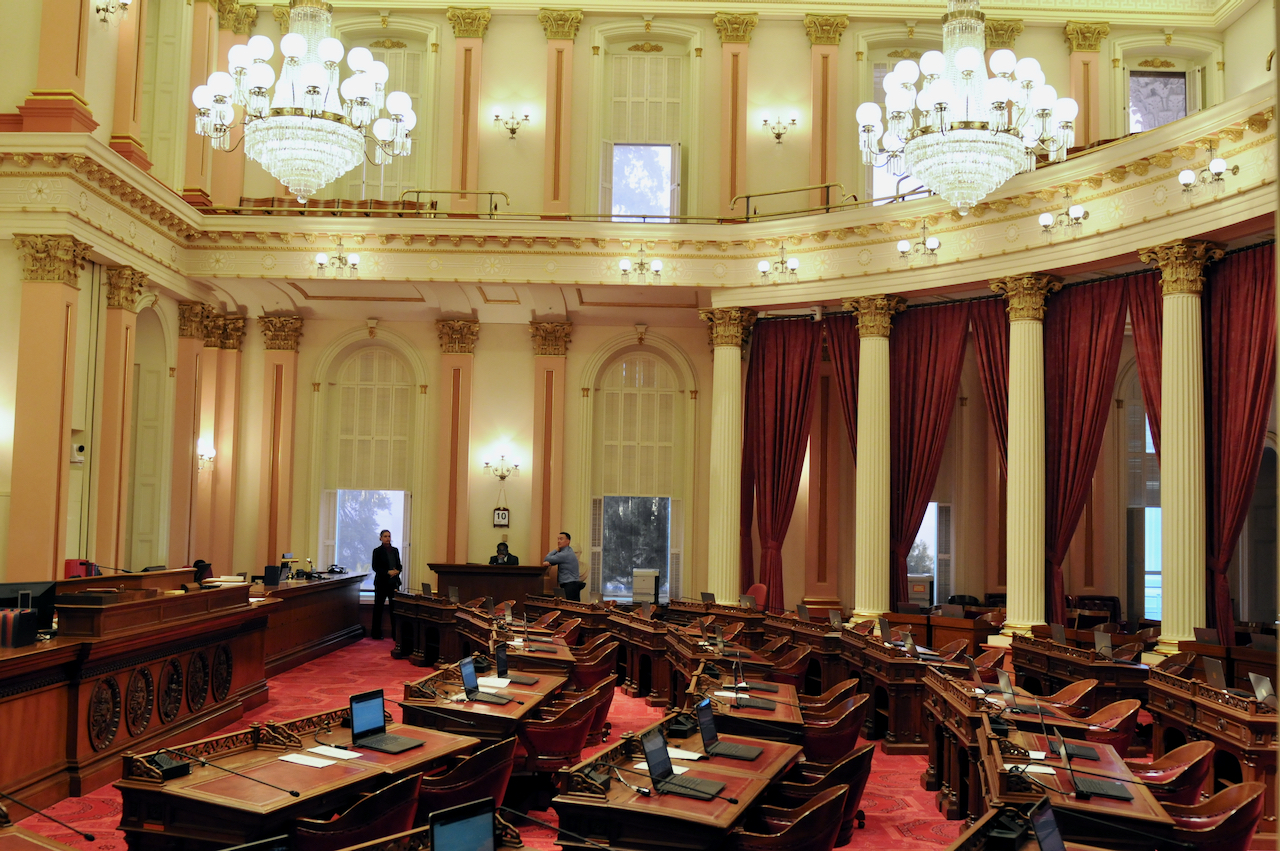
California State Assembly in Session. (Photo: Kevin Sanders for California Globe)
Motions on Bills in Legislative Committees
Does a motion require a second in legislative committees?
By Chris Micheli, May 2, 2023 3:46 pm
In recent weeks, two questions have arisen regarding motions on bills in policy and fiscal committees in the California Legislature.
The first question concerns whether a motion requires a second in legislative committees. This is one of those instances in which the two houses differ in their practices. While the Senate Rules do not address this point, they use the guidance from Mason’s Manual, which is the standard pursuant to the Joint Rules and the respective house rules. Mason’s Manual specifies only a motion is required, but not a second. As a result, the practice followed by the Senate is a bill can be voted on after a motion is made.
On the other hand, Assembly Rule 93 deals with consideration of motions. Whether a motion is in writing or made orally, these motions may not be adopted until they are seconded and distinctly stated by the presiding officer. As a result, in Assembly committees, a bill cannot be voted on unless there is both a motion and a second.
The second question concerns whether a bill’s author (who is a member of the committee considering the author’s bill) or the chair, when no other committee member is present, can make a motion to vote on a bill in a committee. Neither the Assembly nor the Senate follows this practice, although in theory committee members can make motions under Mason’s Manual. However, the custom and practice of the two houses is to not have a bill author make a motion on his or her own bill. Similarly, it is not the custom and practice of either house to have a chair make a motion on a bill, even when there is no other committee members present.
- Recent Legal Challenges to California Statutes - December 4, 2025
- Interpretation of International Commercial Disputes - December 4, 2025
- Volume of Daily Journal Letters Submitted by Bill Authors – 2025 Update - December 3, 2025




